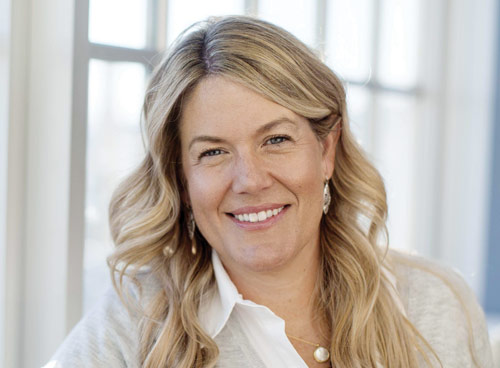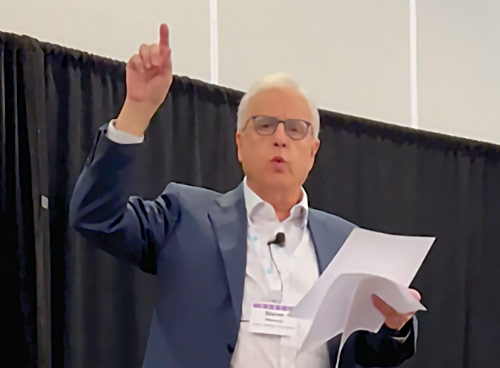Reclaiming Balance
Elizabeth Cook is Vice President for Technical Strategy at the Association of Edison Illuminating Companies.
The journey from survival to overconsumption reflects a universal struggle for balance, whether on a micro-level in our personal lives or at the macro-level in industries like energy. Initially focused on providing power to fulfill fairly modest human and societal needs, the energy sector now faces the challenges of excess as customer demand continues to rise in order to satisfy energy overconsumption.
By examining the spectrum from survival to overconsumption and its consequences, utility companies can recognize the need to realign with their foundational purpose – delivering reliable, resilient energy. However, achieving this reset requires intentional investment in the operational workforce, fostering innovation, collaboration, and community stewardship as cornerstones of progress.
Utility companies were established to provide reliable power to homes and businesses to meet essential needs. In this early stage, the industry’s purpose was clear: ensuring energy was accessible, affordable, and dependable.
This focus reflected the survival phase, where basic needs drive actions. Utilities operated with purpose and clarity, grounded in their mission to serve communities. Employees, too, were deeply connected to this mission, aligning their work with the essential goal of powering lives.
As the industry matured, it transitioned from survival to growth. Stability allowed for infrastructure expansion, technological innovation, and modernization. Energy became abundant and readily available.
As demand for energy continued to grow, utilities became leaders in societal and industrial progress, improving efficiency, digitizing operations, and launching customer-focused programs. Workforce development played an important role here, as utilities equipped employees with the skills needed to manage an increasingly complex grid and navigate a rapidly changing energy landscape.
However, as growth gave way to ever-increasing energy demands, the balance shifted. The ever-increasing demands of overconsumption brought disconnection. Utilities, in response to rising pressures and expectations, were forced to expand infrastructure and capacity, often without the time and opportunity to prioritize efficiency.
Practices became misaligned with the original mission of providing resilient and reliable power. Redundant systems, inefficiencies, and lagging innovation began to dominate. As the industry became disconnected from its foundational purpose, employees often mirrored this disconnection, grappling with outdated systems and a lack of clarity around their role in the energy transition.
The consequences of this long period of increasing overconsumption are evident. Aging infrastructure, environmental degradation, and declining public trust reflect a system out of balance. Utilities face challenges not only in meeting modern needs but also in engaging and equipping their workforce to tackle these demands.
Reclaiming Balance: Cultural Reset
To reclaim balance, a cultural reset is needed – one that places mission and purpose at the center of operations. Workforce development must be a pillar of this reset. The employees who have carried the energy industry through the last several decades are retiring and we must recruit and train a new workforce to meet the challenges ahead.
A 2016 report prepared by the Democratic Staff of the U.S. Senate Committee on Energy & Natural Resources, stated that the average energy worker in the U.S. was seven years older than the average worker across all industries and that energy worker retirements were occurring at a rate more than double the percent of new employees being trained.
Some progress has been made over the past eight years. The “2024 United States Energy & Employment Report,” from the U.S. Department of Energy, states that “the energy workforce was younger than the U.S. workforce as a whole, with “eighty two percent of the energy workforce younger than fifty-five compared to the national workforce average of seventy-seven percent.”
Even so, more than 1.4 million energy workers today are aged fifty-five and up, which means a significant number of skilled and knowledgeable employees will be retiring over the next decade.
How to Move Forward
Just as utilities must align their strategies with modern societal needs, they must also reimagine how they empower and support their teams. By investing in apprenticeship programs and partnerships with schools, utilities can rebuild a talent pipeline aligned with emerging industry demands.
Leadership development programs focused on innovation and change management will ensure leaders are equipped to guide this transformation. Cross-functional training can foster a holistic understanding of utility operations, helping employees collaborate effectively and see the bigger picture. These efforts represent a return to the basics of engagement – mentoring, educating, and creating clear pathways for career growth.
To build a workforce that reflects the communities they serve, utilities are conducting community and employee assessments, hosting listening sessions, and implementing mentorship programs. These efforts not only enhance equity but also rebuild trust within the workforce and with external stakeholders. A renewed focus on workforce development can help utilities reconnect with their mission, fostering a culture where innovation thrives, and employees feel valued.
Recognizing this, AEIC has launched a Workforce Development Committee to focus on equipping utility leaders to build highly skilled and optimized operational teams that will drive industry transformation. This new committee will draw on AEIC’s utility members from across North America to lay the foundation of knowledge and best practices for designing a strong workforce capable of meeting the challenges ahead.
Adapting to technological advancements is another key component of this cultural reset. Automation and digital tools are transforming the energy sector, but their success depends on a workforce prepared to harness them.
Upskilling existing workers and hiring a new generation of employees in areas like data management, analytics, and digital literacy ensures teams can effectively leverage these tools. Transition plans for workers affected by automation can help utilities retain institutional knowledge while enabling employees to take on new, impactful roles. These efforts also align with the broader goal of addressing inefficiency and aligning utility practices with long-term sustainability.
By returning to their roots and prioritizing sustainable workforces, innovation, and community engagement, utilities can redefine success and achieve resilience by empowering their teams to thrive in a rapidly evolving landscape.
This cultural reset must extend beyond organizational strategy to the workforce itself, emphasizing systems thinking, collaboration, and adaptability. Employees who understand how people, processes, and technologies interact are better equipped to solve complex problems and drive meaningful change.
The spectrum from survival to overconsumption offers a valuable lens for understanding the challenges faced by the energy industry. It also highlights the importance of workforce development in reclaiming balance and purpose.
By investing in employees and fostering a culture of adaptability, utilities can increase trust, improve efficiency, and continue to achieve safe, reliable, and affordable power. The energy sector’s transformation is not just about technology or infrastructure – it’s about people. With a renewed focus on workforce development and community collaboration, the industry can transition from imbalance to a future defined by innovation and impact.
Category (Actual):
Department:


